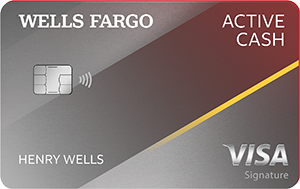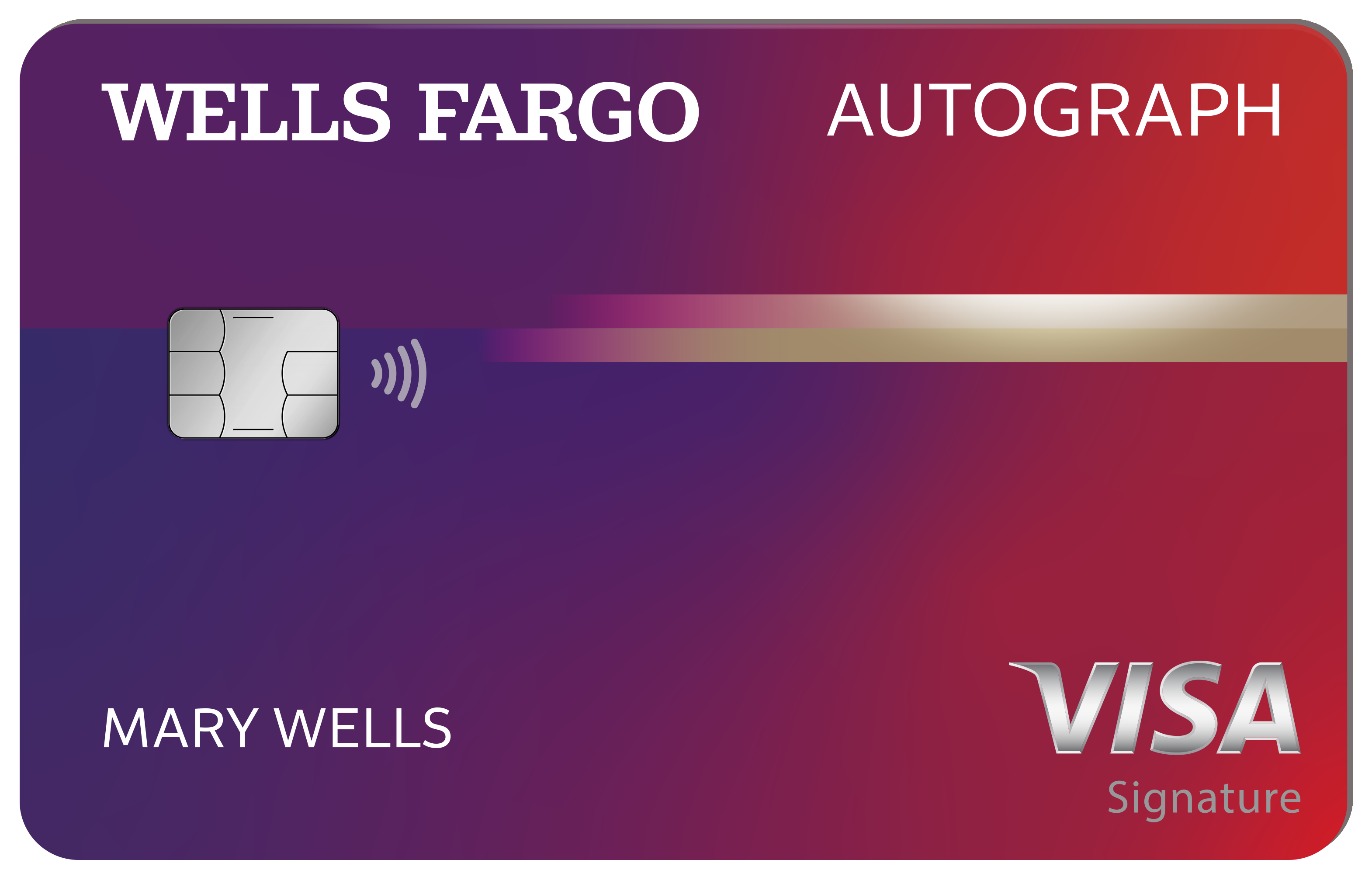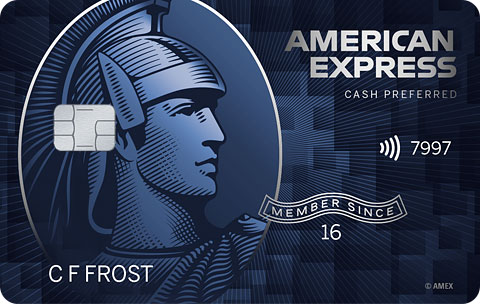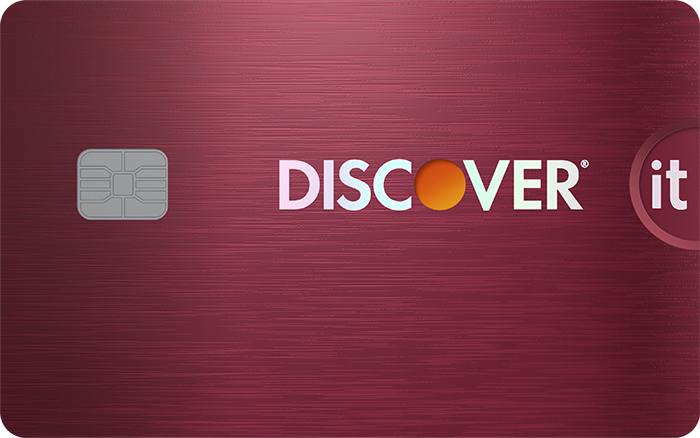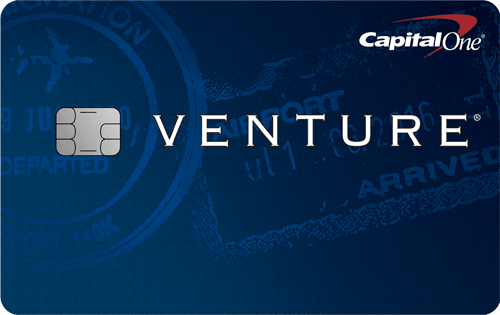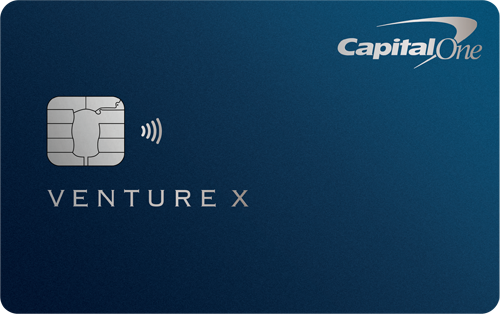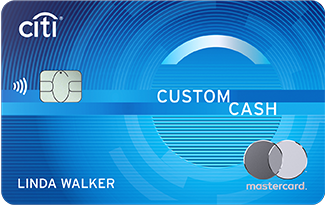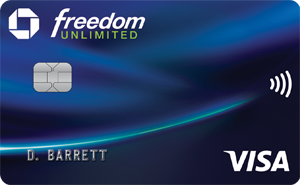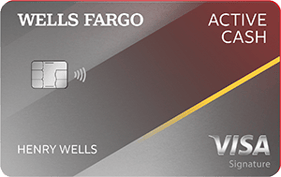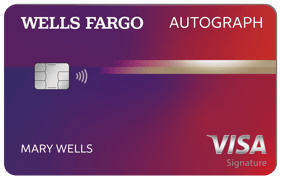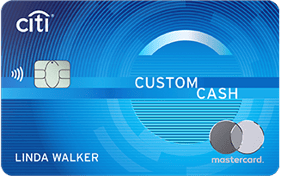If you're reading this, you're likely deep in research (and maybe have multiple tabs open) wondering how to choose the best rewards credit card. Below, we'll highlight which we think are the standouts.
But it's important to note before we start: The cards below aren't simply those that pay us to say they're great cards. These are rewards cards we use personally or are cards we regularly recommend to our friends and family.
Best rewards credit cards
Here's a quick overview of standout rewards cards before you dive into our full list of top picks.
- Best rewards card overall: Wells Fargo Active Cash® Card (see rates and fees)
- Best rewards card for travel: Wells Fargo Autograph℠ Card (see rates and fees)
- Best for gas and supermarket rewards: Blue Cash Preferred® Card from American Express (see rates and fees)
- Best cashback credit card for bonus categories: Discover it® Cash Back (see rates and fees)
- Best flat rate rewards credit card: Capital One Venture Rewards Credit Card (see rates and fees)
Best rewards card overall: Wells Fargo Active Cash® Card
Great for: Overall best rewards card
Good/Excellent (670-850)
Intro APR 0% intro APR for 15 months from account opening on purchases and qualifying balance transfers
Purchases: 0% intro APR, 15 months from account opening
Balance Transfers: 0% intro APR, 15 months from account opening on qualifying balance transfers
Regular APR
20.24%, 25.24%, or 29.99% Variable APR
Rewards Earn unlimited 2% cash rewards on purchases.
2% cash rewards
Annual Fee N/A
$0
Welcome Offer Earn a $200 cash rewards bonus after spending $500 in purchases in the first 3 months.
$200 cash rewards
-
This card’s unlimited 2% cash rewards on purchases is the highest we’ve seen for a flat-rate rewards card with no annual fee. It also has an incredibly easy-to-earn $200 welcome bonus and a generous intro APR offer. We simply haven’t come across this combination of top perks in one card before. Read Full Review
-
- Unlimited 2% cash rewards
- Long 0% intro APR offer
- Generous cash rewards welcome bonus
- No annual fee
- Cellphone protections
- Card perks
- Free FICO® Score updates
- No bonus categories
- Foreign transaction fees
- Balance transfer fee
-
- Select “Apply Now” to take advantage of this specific offer and learn more about product features, terms and conditions.
- Earn a $200 cash rewards bonus after spending $500 in purchases in the first 3 months.
- Earn unlimited 2% cash rewards on purchases.
- 0% intro APR for 15 months from account opening on purchases and qualifying balance transfers. 20.24%, 25.24%, or 29.99% Variable APR thereafter; balance transfers made within 120 days qualify for the intro rate and fee of 3% then a BT fee of up to 5%, min: $5.
- $0 annual fee.
- No categories to track or remember and cash rewards don’t expire as long as your account remains open.
- Find tickets to top sports and entertainment events, book travel, make dinner reservations and more with your complimentary 24/7 Visa Signature® Concierge.
- Up to $600 of cell phone protection against damage or theft. Subject to a $25 deductible.
Why we picked it: This card is great if you strive for simplicity with your finances. You don't need to worry about activating bonus categories, or what purchases qualify for those categories. You earn 2% cash rewards for any type of purchase you put on this card.
What to watch out for: Wells Fargo has a below average customer satisfaction rating (based on J.D. Power survey).
Best rewards credit card for travel: Wells Fargo Autograph℠ Card
Great for: Travel rewards
Good/Excellent (670-850)
Intro APR 0% intro APR on purchases for 12 months from account opening
Purchases: 0% intro APR, 12 months from account opening
Balance Transfers: N/A
Regular APR
20.24%, 25.24%, or 29.99% Variable APR
Rewards Earn unlimited 3X points on restaurants, travel, gas stations, transit, popular streaming services and phone plans. Plus earn 1X points on other purchases.
1X-3X points
Annual Fee N/A
$0
Welcome Offer Earn 20,000 bonus points when you spend $1,000 in purchases in the first 3 months - that's a $200 cash redemption value.
20,000 bonus points
-
This card offers unlimited 3X points on common things like restaurants, gas stations, travel, transit, popular streaming services, and phone plans. Plus, earn 1X points on other purchases. This could be a great pick if you spend a lot in those categories. A solid welcome bonus and cell phone protection are the cherries on top. Read Full Review
-
- Strong welcome bonus for a no annual fee card
- Earn Unlimited 3x points on useful categories
- Cellphone protection
- Other cards offer larger bonuses, though they usually come with annual fees
- The 1x points baseline rewards rate on other purchases, though normal for this type of card, can be beat
-
- Select “Apply Now” to take advantage of this specific offer and learn more about product features, terms and conditions.
- Earn 20,000 bonus points when you spend $1,000 in purchases in the first 3 months - that's a $200 cash redemption value.
- Earn unlimited 3X points on the things that really add up - like restaurants, travel, gas stations, transit, popular streaming services, and phone plans. Plus, earn 1X points on other purchases.
- $0 annual fee.
- 0% intro APR for 12 months from account opening on purchases. 20.24%, 25.24%, or 29.99% variable APR thereafter.
- Up to $600 of cell phone protection against damage or theft. Subject to a $25 deductible.
- Redeem your rewards points for travel, gift cards, or statement credits. Or shop at millions of online stores and redeem your rewards when you check out with PayPal.
- Find tickets to top sports and entertainment events, book travel, make dinner reservations and more with your complimentary 24/7 Visa Signature® Concierge.
Why we picked it: It's one of the few credit cards in the travel category with no annual fee, and you can earn unlimited rewards in multiple spending categories.
What to watch out for: This card offers 0% intro APR on purchases for 12 months from account opening, which is a nice perk. However, this doesn't apply to balance transfers, and there are other no annual fee credit cards that pack in both.
Best for gas and supermarket rewards: Blue Cash Preferred® Card from American Express
Blue Cash Preferred® Card from American Express
Great for: U.S. gas and supermarkets
On American Express' Secure Website.
Terms apply
On American Express' Secure Website.
Terms apply
Good/Excellent (670-850)
Intro APR
Purchases: 0%, 12 months
Balance Transfers: 0%, 12 months
Regular APR
19.24%-29.99% Variable
Rewards 6% Cash Back at U.S. supermarkets on up to $6,000 per year in purchases (then 1%). 6% Cash Back on select U.S. streaming subscriptions. 3% Cash Back at U.S. gas stations. 3% Cash Back on transit (including taxis/rideshare, parking, tolls, trains, buses and more). 1% Cash Back on other purchases. Cash Back is received in the form of Reward Dollars that can be redeemed as a statement credit or at Amazon.com checkout.
1%-6% Cash Back
Annual Fee
$0 intro annual fee for the first year, then $95.
Welcome Offer Earn a $250 statement credit after you spend $3,000 in purchases on your new Card within the first 6 months.
$250
-
This card offers market-leading cash back at U.S. Supermarkets. The welcome bonus and intro APR offer just sweeten the deal. Terms apply. If you spend at least $500 per month on groceries (excluding wholesale clubs and super-stores like Costco and Walmart), this card is worth considering. Read Full Review
-
- Big welcome offer
- U.S. supermarkets rewards
- U.S. gas stations rewards
- Streaming subscription rewards
- Travel and purchase protections
- Annual fee
- Foreign transaction fee
-
- Earn a $250 statement credit after you spend $3,000 in purchases on your new Card within the first 6 months.
- $0 intro annual fee for the first year, then $95.
- Buy Now, Pay Later: Enjoy $0 intro plan fees when you use Plan It® to split up large purchases into monthly installments. Pay $0 intro plan fees on plans created during the first 12 months from the date of account opening. Plans created after that will have a monthly plan fee up to 1.33% of each eligible purchase amount moved into a plan based on the plan duration, the APR that would otherwise apply to the purchase, and other factors.
- Low Intro APR: 0% on purchases and balance transfers for 12 months from the date of account opening. After that, your APR will be a variable APR of 19.24% - 29.99%. Variable APRs will not exceed 29.99%.
- 6% Cash Back at U.S. supermarkets on up to $6,000 per year in purchases (then 1%).
- 6% Cash Back on select U.S. streaming subscriptions.
- 3% Cash Back at U.S. gas stations.
- 3% Cash Back on transit (including taxis/rideshare, parking, tolls, trains, buses and more).
- 1% Cash Back on other purchases.
- Cash Back is received in the form of Reward Dollars that can be redeemed as a statement credit or at Amazon.com checkout.
- Get up to $120 in statement credits annually when you pay for an auto-renewing subscription to Equinox+ at equinoxplus.com with your Blue Cash Preferred® Card. That’s $10 in statement credits each month. Enrollment required.
- Thinking about getting the Disney Bundle which can include Disney+, Hulu, and ESPN+? Your decision made easy with $7/month back in the form of a statement credit after you spend $9.99 or more each month on an eligible subscription (subject to auto renewal) with your Blue Cash Preferred® Card. Enrollment required.
- Terms Apply.
Why we picked it: This card is at the top of the list for cash back at U.S. supermarkets. If you spend at least $500 per month on groceries (excluding wholesale clubs like Costco), this card is worth considering.
What to watch out for: The Blue Cash Preferred® Card from American Express charges a $0 intro annual fee for the first year, then $95. (terms apply) (see rates and fees)
Best cashback credit card for bonus categories: Discover it® Cash Back
Great for: Bonus-category cash back
Good/Excellent (670-850)
Intro APR
Purchases: 0%, 15 months
Balance Transfers: 0%, 15 months
Regular APR
17.24% - 28.24% Variable APR
Rewards Earn 5% cash back on everyday purchases at different places you shop each quarter like grocery stores, restaurants, gas stations, and more, up to the quarterly maximum when you activate. Plus, earn unlimited 1% cash back on all other purchases—automatically.
1% - 5% Cashback
Annual Fee
$0
Welcome Offer N/A
Discover will match all the cash back you’ve earned at the end of your first year.
-
We think this card has among the highest cash back potential for cards with no annual fee. The key is the Unlimited Cashback Match — Discover automatically matches all the cash back new cardholders have earned at the end of the first year. That cash back can seriously add up when you earn 5% cash back on rotating bonus categories (when you activate them, up to the quarterly maximum) and 1% on other purchases. Read Full Review
-
- Rotating bonus categories
- Sign-up bonus offer
- Great intro APR offer
- No annual fee
- No foreign transaction fee
- No fixed bonus categories
-
- INTRO OFFER: Unlimited Cashback Match for all new cardmembers – only from Discover. Discover will automatically match all the cash back you’ve earned at the end of your first year! There’s no minimum spending or maximum rewards. You could turn $150 cash back into $300.
- Earn 5% cash back on everyday purchases at different places you shop each quarter like grocery stores, restaurants, gas stations, and more, up to the quarterly maximum when you activate. Plus, earn unlimited 1% cash back on all other purchases—automatically.
- Redeem your rewards for cash at any time.
- Discover could help you reduce exposure of your personal information online by helping you remove it from select people-search sites that could sell your data. It’s free, activate with the mobile app.
- Get a 0% intro APR for 15 months on purchases. Then 17.24% to 28.24% Standard Variable Purchase APR applies, based on credit worthiness.
- No annual fee.
- Terms and conditions apply.
Why we picked it: I got this card last year, and what I love is that it can benefit just about anyone. With its rewards rate, it works well in a one-card wallet where you always pay with the same credit card. But if you have other rewards cards, like I do, it slots in seamlessly. Just find out where it's earning 5% each quarter, activate, and use it in those bonus categories.
What to watch out for: This rewards credit card is not as widely accepted internationally as Visa or Mastercard.
Best flat rate rewards credit card: Capital One Venture Rewards Credit Card
Capital One Venture Rewards Credit Card
Great for: U.S. gas and supermarkets
Good/Excellent (670-850)
Intro APR
Purchases: N/A
Balance Transfers: N/A
Regular APR
19.99% - 29.99% (Variable)
Rewards Earn unlimited 2X miles on every purchase, every day. Earn 5X miles on hotels and rental cars booked through Capital One Travel, where you'll get Capital One's best prices on thousands of trip options.
2X-5X miles
Annual Fee
$95
Welcome Offer 75,000 Miles once you spend $4,000 on purchases within 3 months from account opening
75,000 Miles
-
This is one of our top travel credit cards overall, because of its highly lucrative, yet dead simple rewards program. Earn unlimited 2X miles on every purchase and use them to get reimbursed for any travel purchase — or to book a trip through Capital One Travel. TSA Pre✓® credit and the opportunity to earn a massive 75,000 Miles sign-up bonus (worth $750 in travel) make this credit card one of the best travel companions. Read Full Review
-
- Excellent sign-up bonus
- Unlimited miles on purchases
- Travel credit
- Multiple ways to use miles
- No foreign transaction fee
- Annual fee
- No 0% intro APR offer
-
- Enjoy a one-time bonus of 75,000 miles once you spend $4,000 on purchases within 3 months from account opening, equal to $750 in travel
- Earn unlimited 2X miles on every purchase, every day
- Earn 5X miles on hotels and rental cars booked through Capital One Travel, where you'll get Capital One's best prices on thousands of trip options
- Miles won't expire for the life of the account and there's no limit to how many you can earn
- Receive up to a $100 credit for Global Entry or TSA PreCheck®
- Use your miles to get reimbursed for any travel purchase—or redeem by booking a trip through Capital One Travel
- Enrich every hotel stay from the Lifestyle Collection with a suite of cardholder benefits, like a $50 experience credit, room upgrades, and more
- Transfer your miles to your choice of 15+ travel loyalty programs
Why we picked it: Personally, I love having a travel card that I can rely on to get 2 miles per $1 everywhere. (See rates and fees.) Capital One Venture cards have great reward redemption options. I regularly save thousands on business-class airfare by transferring my Venture miles.
What to watch out for: Capital One doesn't have as many travel partners as some other card issuers.
More of our best credit cards for points:
Though these cards didn’t make our quick picks above, they are still excellent rewards cards in our view. Depending on your personal situation, these could easily be a better fit for you than the cards above.
Here’s a look at some of our other favorites so you can compare credit card points or rewards:
Capital One Venture X Rewards Credit Card
Great for: Premium travel rewards
On Capital One's Secure Website.
On Capital One's Secure Website.
Excellent (740-850)
Intro APR
Purchases: N/A
Balance Transfers: N/A
Regular APR
19.99% - 29.99% (Variable)
Rewards Earn unlimited 10X miles on hotels and rental cars booked through Capital One Travel and 5X miles on flights booked through Capital One Travel. Earn unlimited 2X miles on all other purchases.
2X-10X miles
Annual Fee
$395
Welcome Offer 75,000 Miles when you spend $4,000 on purchases in the first 3 months from account opening
75,000 Miles
-
Our favorite premium travel card. Yes, there’s a premium annual fee here, but you get what you might expect from a luxury card, like up to 10X miles on spending through Capital One Travel, a $300 travel credit, experience credits, and a huge welcome bonus. Read Full Review
-
- Big travel rewards bonus
- High rewards rate
- Travel credits
- Easy-to-use miles
- Annual fee
- Small selection of travel partners
-
- Earn 75,000 bonus miles when you spend $4,000 on purchases in the first 3 months from account opening, equal to $750 in travel
- Receive a $300 annual credit for bookings through Capital One Travel, where you'll get Capital One's best prices on thousands of trip options
- Get 10,000 bonus miles (equal to $100 towards travel) every year, starting on your first anniversary
- Earn unlimited 10X miles on hotels and rental cars booked through Capital One Travel and 5X miles on flights booked through Capital One Travel
- Earn unlimited 2X miles on all other purchases
- Unlimited complimentary access for you and two guests to 1,300+ lounges, including Capital One Lounges and the Partner Lounge Network
- Use your Venture X miles to easily cover travel expenses, including flights, hotels, rental cars and more—you can even transfer your miles to your choice of 15+ travel loyalty programs
- Elevate every hotel stay from the Premier or Lifestyle Collections with a suite of cardholder benefits, like an experience credit, room upgrades, and more
- Receive up to a $100 credit for Global Entry or TSA PreCheck®
Great for: Cash back rewards
Fair to Excellent (580-850)
Intro APR
Purchases: 0%, 15 months
Balance Transfers: 0%, 15 months
Regular APR
19.24% - 29.24% (Variable)
Rewards 5% cash back in your top eligible spend category each billing cycle (up to the first $500 spent), 1% cash back on other purchases. Earn an additional 4% cash back on hotels, car rentals, and attractions booked on Citi Travel℠ portal through 6/30/2025.
1% - 5% cash back
Annual Fee
$0
Welcome Offer Earn $200 in cash back after you spend $1500 on purchases in the first 6 months of account opening. This bonus offer will be fulfilled as 20,000 ThankYou® Points, which can be redeemed for $200 cash back.
20,000 ThankYou® Points
-
We love this card’s easy-to-use yet lucrative cash back program. Each billing cycle, cardholders earn 5% cash back in their top spend category (up to $500 spent in eligible categories). Eligible categories include grocery stores, restaurants, gas stations, select travel and more. The card automatically adjusts to your spending habits, which makes it easy to maximize your rewards. Read Full Review
-
- Cash back rewards
- Sign-up bonus
- No annual fee
- 0% intro APR offer
- Bonus cash back limits
- Foreign transaction fee
-
- Earn $200 cash back after you spend $1,500 on purchases in the first 6 months of account opening. This bonus offer will be fulfilled as 20,000 ThankYou® Points, which can be redeemed for $200 cash back.
- 0% Intro APR on balance transfers and purchases for 15 months. After that, the variable APR will be 19.24% - 29.24%, based on your creditworthiness.
- Earn 5% cash back on purchases in your top eligible spend category each billing cycle, up to the first $500 spent, 1% cash back thereafter. Also, earn unlimited 1% cash back on all other purchases.
Special Travel Offer: Earn an additional 4% cash back on hotels, car rentals, and attractions booked on Citi Travel℠ portal through 6/30/2025. - No rotating bonus categories to sign up for – as your spending changes each billing cycle, your earn adjusts automatically when you spend in any of the eligible categories.
- No Annual Fee
- Citi will only issue one Citi Custom Cash® Card account per person.
Great for: Unlimited cash back
On Chase's Secure Website.
On Chase's Secure Website.
Good/Excellent (670-850)
Intro APR 0% Intro APR on Purchases and Balance Transfers for 15 months
Purchases: 0% Intro APR on Purchases, 15 months
Balance Transfers: 0% Intro APR on Balance Transfers, 15 months
Regular APR
20.49% - 29.24% Variable
Rewards Enjoy 5% cash back on travel purchased through Chase Travel, our premier rewards program that lets you redeem rewards for cash back, travel, gift cards and more; 3% cash back on drugstore purchases and dining at restaurants, including takeout and eligible delivery service, and 1.5% on all other purchases
1.5% - 5% cash back
Annual Fee N/A
$0
Welcome Offer Earn an extra 1.5% on everything you buy (on up to $20,000 spent in the first year) — worth up to $300 cash back. That's 6.5% on travel purchased through Chase Travel, 4.5% on dining and drugstores, and 3% on all other purchases.
Up to $300 cash back
-
This card would be highly-rated based on its unlimited 1.5% - 5% cash back rates & 0% Intro APR offer alone. But the innovative sign-up bonus (worth up to $300 cash back) makes it particularly good if this would be your primary credit card. With the bonus, you’ll earn 4.5% cash back on dining and drugstores, 6.5% on travel booked through Chase Ultimate Rewards®, and 3% on all other purchases (on up to $20,000 spent in the first year). After the bonus, you’ll still earn the regular cash back rates on every purchase. Read Full Review
-
- Innovative sign-up bonus
- Purchase and travel protections
- Robust rewards program
- Great intro APR
- No annual fee
- Foreign transaction fee
-
- INTRO OFFER: Earn an additional 1.5% cash back on everything you buy (on up to $20,000 spent in the first year) - worth up to $300 cash back!
- Enjoy 6.5% cash back on travel purchased through Chase Travel, our premier rewards program that lets you redeem rewards for cash back, travel, gift cards and more; 4.5% cash back on drugstore purchases and dining at restaurants, including takeout and eligible delivery service, and 3% on all other purchases (on up to $20,000 spent in the first year).
- After your first year or $20,000 spent, enjoy 5% cash back on travel purchased through Chase Travel, 3% cash back on drugstore purchases and dining at restaurants, including takeout and eligible delivery service, and unlimited 1.5% cash back on all other purchases.
- No minimum to redeem for cash back. You can choose to receive a statement credit or direct deposit into most U.S. checking and savings accounts. Cash Back rewards do not expire as long as your account is open!
- Enjoy 0% Intro APR for 15 months from account opening on purchases and balance transfers, then a variable APR of 20.49% - 29.24%.
- No annual fee – You won't have to pay an annual fee for all the great features that come with your Freedom Unlimited® card
- Keep tabs on your credit health, Chase Credit Journey helps you monitor your credit with free access to your latest score, alerts, and more.
- Member FDIC
How to choose the rewards credit card that's best for you
There’s one simple thing to consider that will help you make the best choice: How much effort will you put into your credit card?
Rewards credit cards can be a very simple way to earn rewards and cash back for your spending. Or they can be a fun game of maximizing points and optimizing the use of perks.
Here’s a breakdown of the choices to make based on whether you want to keep it simple or get more involved.
| Keep it simple | Optimize | |
|---|---|---|
| Rewards credit card type | Cash back | Points / Travel Rewards |
| Points program | Flat-rate | Tiered |
| Annual fee | No | Maybe (value dependent) |
| Perks | Less focus | Carefully consider perks that give you value |
You don’t have to choose everything from one column. But the more you just want to sit back while your credit card earns rewards, the more you should choose from the “keep it simple” column. And the more you want to earn the most rewards and get the biggest benefits from card perks, the more the “optimize” column may be right for you.
Pros and cons of rewards credit cards
Here are the pros and cons of having a rewards credit card:
Pros
- Earn rewards on purchases
- Many offer welcome bonuses
- Typically include complimentary shopping and travel protections
- Can build your credit when you consistently pay your bill in full
Cons
- Often have high APRs
- Can encourage you to spend more money
- May charge an annual fee
- Top rewards cards are only available to consumers with good credit
How to maximize credit card rewards
- Use your rewards card for every eligible purchase: If you don't, you leave money on the table. Always pay by card so you earn rewards on your spending.
- Stick to your budget: A common mistake is making unnecessary purchases, using rewards to justify it. Don't let credit card rewards convince you to overspend.
- Pay off your credit card every month: Credit card interest almost always costs more than any rewards you earn. Avoid this by always paying your entire statement balance.
Should I get a rewards credit card?
You should get a rewards credit card if you have a good credit score and will pay the bill in full every month.
Rewards cards are usually a great choice. You're going to pay for purchases anyway. Why not use a rewards card to get something back on that money you're spending? There are only a couple of situations where the best points credit card isn't the right fit:
If you don't have a good credit score:
Learn how to increase your credit score and work on that first. It usually takes a FICO® Score of at least 670 to get any of the best rewards credit cards. By improving your credit, you can qualify for rewards cards that offer much more value.
If you won't pay in full every month:
Every month you carry a balance, the card issuer can charge you credit card interest. The cost of interest almost always outweighs your rewards.
Alternatives to the best credit cards for rewards
Your financial situation may call for a different type of credit card. Here are a few common situations where a rewards credit card isn't the right choice, along with what type of card to pick instead.
- If you won't be able to pay in full, get a credit card with a 0% intro APR on purchases. The credit card company won't charge you interest during your card's introductory period. On a card with a 15-month 0% intro APR, that means no interest charges for the first 15 months.
- If you're working on your credit score, find a card aimed at people in your score range. First, learn about how to find out your credit score. Every credit score falls into a range, like "fair credit" or "bad credit." Once you know your score, you can pick a card you're likely to qualify for.
- If you're dealing with credit card debt, go with a balance transfer credit card. These cards have a 0% intro APR on balance transfers (balances you move over from other credit cards). Although a balance transfer fee applies, you can still save quite a bit on interest this way. If you're unfamiliar with this type of offer, our complete guide to balance transfers explains everything you need to know.
Compare the best credit cards for rewards
| Card | Rating | Great For |
|---|---|---|
|
Rating image, 5.00 out of 5 stars.
5.00/5
Our ratings are based on a 5 star scale.
5 stars equals Best.
4 stars equals Excellent.
3 stars equals Good.
2 stars equals Fair.
1 star equals Poor.
We want your money to work harder for you. Which is why our ratings are biased toward offers that deliver versatility while cutting out-of-pocket costs.
|
Great For: Overall best rewards card |
|
|
|
Rating image, 4.50 out of 5 stars.
4.50/5
Our ratings are based on a 5 star scale.
5 stars equals Best.
4 stars equals Excellent.
3 stars equals Good.
2 stars equals Fair.
1 star equals Poor.
We want your money to work harder for you. Which is why our ratings are biased toward offers that deliver versatility while cutting out-of-pocket costs.
|
Great For: Travel rewards |
|
|
Rating image, 4.50 out of 5 stars.
4.50/5
Our ratings are based on a 5 star scale.
5 stars equals Best.
4 stars equals Excellent.
3 stars equals Good.
2 stars equals Fair.
1 star equals Poor.
We want your money to work harder for you. Which is why our ratings are biased toward offers that deliver versatility while cutting out-of-pocket costs.
|
Great For: U.S. gas and supermarkets |
|
|
Rating image, 5.00 out of 5 stars.
5.00/5
Our ratings are based on a 5 star scale.
5 stars equals Best.
4 stars equals Excellent.
3 stars equals Good.
2 stars equals Fair.
1 star equals Poor.
We want your money to work harder for you. Which is why our ratings are biased toward offers that deliver versatility while cutting out-of-pocket costs.
|
Great For: Bonus-category cash back |
|
|
Rating image, 5.00 out of 5 stars.
5.00/5
Our ratings are based on a 5 star scale.
5 stars equals Best.
4 stars equals Excellent.
3 stars equals Good.
2 stars equals Fair.
1 star equals Poor.
We want your money to work harder for you. Which is why our ratings are biased toward offers that deliver versatility while cutting out-of-pocket costs.
|
Great For: U.S. gas and supermarkets |
|
Rating image, 4.50 out of 5 stars.
4.50/5
Our ratings are based on a 5 star scale.
5 stars equals Best.
4 stars equals Excellent.
3 stars equals Good.
2 stars equals Fair.
1 star equals Poor.
We want your money to work harder for you. Which is why our ratings are biased toward offers that deliver versatility while cutting out-of-pocket costs.
|
Great For: Premium travel rewards |
|
|
Rating image, 5.00 out of 5 stars.
5.00/5
Our ratings are based on a 5 star scale.
5 stars equals Best.
4 stars equals Excellent.
3 stars equals Good.
2 stars equals Fair.
1 star equals Poor.
We want your money to work harder for you. Which is why our ratings are biased toward offers that deliver versatility while cutting out-of-pocket costs.
|
Great For: Cash back rewards |
|
|
Rating image, 5.00 out of 5 stars.
5.00/5
Our ratings are based on a 5 star scale.
5 stars equals Best.
4 stars equals Excellent.
3 stars equals Good.
2 stars equals Fair.
1 star equals Poor.
We want your money to work harder for you. Which is why our ratings are biased toward offers that deliver versatility while cutting out-of-pocket costs.
|
Great For: Unlimited cash back |
Our rewards credit card methodology
At The Motley Fool Ascent, we rate rewards credit cards on a five-star scale (1 = poor, 5 = best). Our rating criteria includes rewards earning potential, sign-up bonuses, fees, and perks like cash back and travel credit.
Our highest-rated rewards credit cards have:
- A rewards rate above 2% (or 2x points or miles) with average spending
- Attainable welcome bonuses that make up for any annual fees
- Low annual fees
- Top perks that apply broadly to most people, such as purchase protections, cash back on gas and groceries, and dining rewards
We combine these factors with an evaluation of brand reputation and customer satisfaction to ensure you're getting the best rewards card recommendations. Our aim is to maintain a balanced best-of list featuring top-scoring rewards credit cards from reputable brands.
Ordering within lists is influenced by advertiser compensation, including featured placements at the top of a given list, but our product recommendations are NEVER influenced by advertisers. Learn more about how The Ascent rates credit cards.
FAQs
-
A rewards credit card earns purchase rewards in the form of cash back, points, or miles. Every eligible purchase adds to your rewards balance, and you can then redeem your rewards with the credit card issuer.
-
To compare rewards credit cards, look at their rewards rates, bonus offers, annual fees, and any additional benefits they offer. These are the features that have the most impact on the value a card offers.
You may also want to decide on one type of rewards card first, such as a travel card or a cash back card. If you know you want a specific type of card, then you can save time by only looking at cards in that category.
-
The best rewards credit card has a redemption method that offers the most value. This can vary depending on which rewards credit card you have. For example, travel cards usually provide the most value when redeeming rewards for travel, whereas cash back cards are designed for cash back redemptions.
When you have a rewards credit card, make sure you review the different redemption methods so you can choose the best one.
-
To make the most of a rewards credit card, use it for every purchase to earn as much back as you can. However, don't make unnecessary purchases just because your card earns rewards. Follow your usual spending habits. Last but not least, always pay the full statement balance on your credit card to avoid interest charges.
-
A credit card with reward points earns cash back, points, miles, or some other type of reward for purchases. The amount you earn depends on the card and, in some cases, the spending category. For example, there are cards that offer a flat rate of 2% on purchases. Others offer higher rates in some categories, such as 3% on groceries.
Every eligible purchase adds to your reward balance. So, if you spend $100 on a card offering 2% cash back, you'd earn $2 in rewards. You can redeem rewards when you have enough to meet the redemption minimum, if there is one. Fortunately, many of the best rewards credit cards don't have a minimum, so you can redeem rewards anytime.
Ask the experts

Michael Shipman, CPA
Assistant Professor for Accounting, Mount Aloysius College
With high gas prices, should consumers consider using credit cards that provide rewards to pay for gas?
One should never get a credit card for a "non-credit reason." In the tax world, we have the saying, "The tax tail should never wag the economic dog." This means that a company should not do something solely for tax reasons, but rather, should have a good business reason for a course of action. The same can be said of credit cards. This said, if you are opening a new line of credit during a time of high gas prices (whether it be because you need a credit card or an additional credit card, or have to close one for a good reason and are now looking for another), getting and using a credit card that provides rewards to pay for gas could be better than the other usual reward opportunities!
What should consumers know when deciding between a general cash back credit card vs. a gas company credit card?
Consumers should know the details of each reward opportunity. For example, I would want to know what I can and cannot get cash back on, how often I can get cash back, at what rate I get cash back, if there is a limit on how much cash I can get back, and if there are any other restrictions on the card. This line of reasoning applies to gas company credit cards as well: Is it just the one company I can get my gas bill reduced at? How often can I use it? At what rate is my gas reduced? Is there a limit on how much my gas bill is reduced, and are there any other restrictions on the card? Lastly, remember, even though the gas company credit card sounds like a good idea now, it can only help with gas, as opposed to the general cash back credit card likely providing cash back for use at your discretion.
Are there any benefits or drawbacks to companies that advertise money back per gallon?
The obvious benefit is that you can reduce your gas bill. As far as I can tell, that is where the benefits end. One drawback is that you may get a gas company credit card for a company that routinely has more expensive gas than one of its competitors in your area. A similar drawback is that by getting this credit card, you are likely influencing yourself to buy most, if not all, of your gas from one company, which may or may not always be the best economic decision. This is similar to loyalty cards for gas chains (Sheetz, Wawa, etc.), with the difference that loyalty cards do not really have consequences. Credit cards do have consequences, and it is important to read the fine print on gas company credit card offers like any others, as you may find the gas company card has a lower interest rate (benefit), but you may also find (and this sounds more likely, in my opinion) a higher interest rate. Whatever you decide, always remember to monitor your credit card bills carefully, and if possible, pay off your balance every month!

Joseph Stasio
Associate Professor, Marketing, Merrimack College
With high gas prices, should consumers consider using credit cards that provide rewards to pay for gas?
It is important to understand that prices fluctuate given market conditions. Right now, gas prices along with many other consumer products are experiencing abnormally high prices. This is due to a number of factors including unusually high demand, labor shortages, and supply chain irregularities, all causing inflation. Decisions involving credit card usage tied to gas purchases should involve this understanding. So, using credit cards that reward gas purchases will be advantageous in the short run, but not so much when gas prices return to a more normal range. Of course, if consumers have different credit cards to use, then they can provide the best return on purchases after gas prices come down and they offer a better return on their buying behavior.
What should consumers know when deciding between a general cash back credit card vs. a gas company credit card?
The answer to this question is provided in question one. The key is to understand market conditions and their impact on prices. Generally speaking, consumers should have a few credit cards. For example, not all businesses accept either Discover Cards or Amex Cards. Depending on the amount of expenditures people experience each month and whether they carry a balance or pay off the total amount each month, consumers can decide which cards to use that will provide them the best return on their purchases. It is important for consumers to understand their own purchase behavior and judiciously use their credit cards. Gas company credit card decisions should be made in this context.
Are there any benefits or drawbacks to companies that advertise money back per gallon?
Companies that advertise money back per gallon are really speaking to heavy users of gasoline. They would include people who drive long distances to work each day or people who use their cars to conduct business that involves much travel. Salespeople, truck drivers, etc., fall into this category. If companies do not target their messages to these groups of people, then they are wasting their marketing/advertising dollars. With social media platforms and the use of digital marketing techniques, companies should learn how best to reach these people and get the most from their marketing dollars. Any other approach is generally not advisable because people who are not heavy users of gasoline will most probably not be interested in these advertisements.
Our Credit Cards Experts
We're firm believers in the Golden Rule, which is why editorial opinions are ours alone and have not been previously reviewed, approved, or endorsed by included advertisers. The Ascent, a Motley Fool service, does not cover all offers on the market. The Ascent has a dedicated team of editors and analysts focused on personal finance, and they follow the same set of publishing standards and editorial integrity while maintaining professional separation from the analysts and editors on other Motley Fool brands.
For rates and fees for the Blue Cash Preferred® Card from American Express, click here
The Motley Fool owns shares of and recommends Visa and Mastercard. The Motley Fool recommends Amex.
